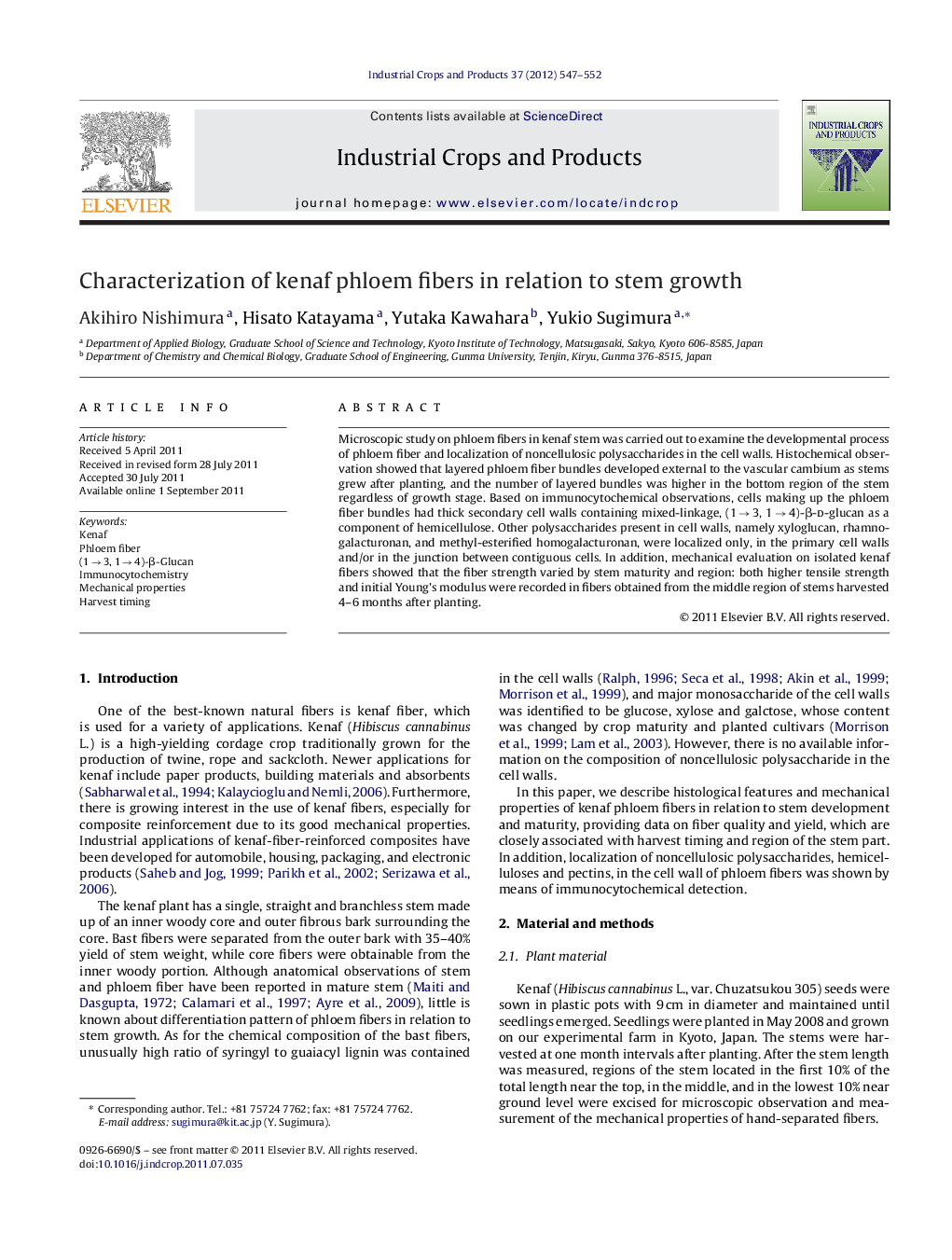| کد مقاله | کد نشریه | سال انتشار | مقاله انگلیسی | نسخه تمام متن |
|---|---|---|---|---|
| 4514269 | 1322206 | 2012 | 6 صفحه PDF | دانلود رایگان |

Microscopic study on phloem fibers in kenaf stem was carried out to examine the developmental process of phloem fiber and localization of noncellulosic polysaccharides in the cell walls. Histochemical observation showed that layered phloem fiber bundles developed external to the vascular cambium as stems grew after planting, and the number of layered bundles was higher in the bottom region of the stem regardless of growth stage. Based on immunocytochemical observations, cells making up the phloem fiber bundles had thick secondary cell walls containing mixed-linkage, (1 → 3, 1 → 4)-β-d-glucan as a component of hemicellulose. Other polysaccharides present in cell walls, namely xyloglucan, rhamnogalacturonan, and methyl-esterified homogalacturonan, were localized only, in the primary cell walls and/or in the junction between contiguous cells. In addition, mechanical evaluation on isolated kenaf fibers showed that the fiber strength varied by stem maturity and region: both higher tensile strength and initial Young's modulus were recorded in fibers obtained from the middle region of stems harvested 4–6 months after planting.
Figure optionsDownload as PowerPoint slideHighlights
► Beyond cordage, kenaf bast fibers are expanding into new markets of moldable, nonwoven fabrics and reinforced composite materials in automotive aerospace, packaging and other industrial applications.
► Kenaf fibers are derived from phloem fiber bundles that are composed of fiber cells with thick secondary cell walls containing mixed-linkage (1 → 3, 1 → 4)-β-d-glucan.
► Development and maturation of phloem fiber bundles was closely associated with stem growth and stem region, thereby leading to significant differences in mechanical properties of the fibers.
Journal: Industrial Crops and Products - Volume 37, Issue 1, May 2012, Pages 547–552